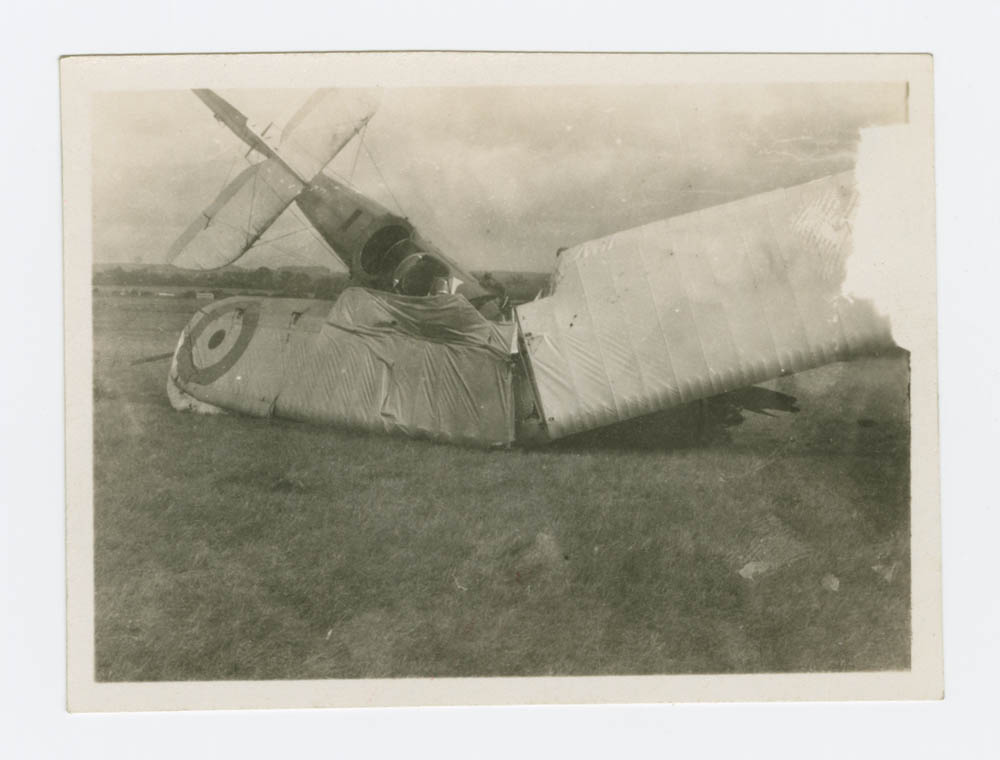Life as a Prisoner of War: The John Lisle Letters
Lieutenant John Lisle of the Royal Naval Volunteer Reserve (RNVR) was captured by Germans when his plane was shot down in the spring of 1943. One of his crew drowned, but Lisle and his gunner, Slowey, were made prisoners of war. Lisle spent two long years near Sagan in Poland at Stammlager Luft 3, or Permanent Camp for Airmen #3, until his release in May 1945. While he was kept captive, Lisle wrote letters to his mother, his father, and his sister, Doreen. A total of fifty of Lisle’s letters have survived. His letters and postcards to his family do not reveal a great deal about Lisle’s life as a “Kriegie” (prisoner of war), as the prisoners were entitled to a strictly limited number of rationed letters and postcards a month, and their letters had to be vague enough to escape the obscuring mark of the censor. Accordingly, Lisle never mentions the famous Great Escape of March 1944, for which prisoners constructed a tunnel named Harry to take them into the forest and away from the compound. Of the 77 prisoners who crawled through the tunnel, only three escaped successfully; 50 were shot, and the rest returned to the camp. Instead, Lisle’s letters are mostly filled with pleas and requests for letters and for warm clothing, because he was captured from his dinghy with only the clothes on his back.
Lisle’s early letters are suffused with boredom. He did not hear from his family for three months, and worried that they were left in suspense with no inkling as to his whereabouts or even whether he was alive or dead. He immediately begs them to write to him, and to ask their friends to write to him, insisting that there is no limit to the amount of incoming mail he is allowed to receive, despite contrary popular opinion. Lisle marvels at his newfound domesticity, noting that the Kriegies have no duties other than cooking and washing for themselves.
Lisle’s letters gradually begin to take on a desperate, almost nagging tone when he begs his family for more letters. His boredom is clear when he describes in detail the tables, charts, and graphs he uses to keep track of the letters he receives. He begs his family to send him photographs, and worries that he will soon forget what they look like.
 In later letters, Lisle describes how he and his fellow Kriegies battle boredom and make the most of their camp circumstances by participating in activities that mimic civilian life. They grow a vegetable garden of radishes, onions, and tomatoes. They make an improvised birthday cake for a friend who turns twenty-one by soaking biscuits in water and frying the biscuits in margarine, with raisins and condensed milk. The “mart” he describes emulates the market place, but rather than purchasing goods with money, the prisoners revert to the old tradition of bartering personal items for cigarettes and condensed milk from the Red Cross. When the winter comes, the prisoners create an ice rink that they can skate on, thanks to the large consignment of skates they receive from the Red Cross. They also design an impromptu education system through which prisoners can learn German, as well as share lectures on their particular fields of interest. Lisle writes that he envisions a career for himself in post-war flour milling, and asks his father to send him books on the subject. He dabbles in softball and fencing. He also takes up portrait-drawing and revels in the fact that his fellow prisoners are lining up to have their portraits taken by him.
In later letters, Lisle describes how he and his fellow Kriegies battle boredom and make the most of their camp circumstances by participating in activities that mimic civilian life. They grow a vegetable garden of radishes, onions, and tomatoes. They make an improvised birthday cake for a friend who turns twenty-one by soaking biscuits in water and frying the biscuits in margarine, with raisins and condensed milk. The “mart” he describes emulates the market place, but rather than purchasing goods with money, the prisoners revert to the old tradition of bartering personal items for cigarettes and condensed milk from the Red Cross. When the winter comes, the prisoners create an ice rink that they can skate on, thanks to the large consignment of skates they receive from the Red Cross. They also design an impromptu education system through which prisoners can learn German, as well as share lectures on their particular fields of interest. Lisle writes that he envisions a career for himself in post-war flour milling, and asks his father to send him books on the subject. He dabbles in softball and fencing. He also takes up portrait-drawing and revels in the fact that his fellow prisoners are lining up to have their portraits taken by him.
Remarkably, considering the circumstances in which he was living, Lisle marvels at the talent and diversity of his fellow prisoners. He raves about the camp theatre company’s production of “Arsenic and Old Lace”, insisting that the show is as good as any show put on in London. This high standard of performance is not so surprising when one learns that the company was made up of professional artists. Lisle is also enthused by his encounters with prisoners from other countries, from whom he learns about Australian farming, Antarctic whale fishing, and trading in Hudson’s Bay. He seems determined to make the best of his incarceration. Indeed, Lisle’s letters demonstrate the resilience of human creativity during times of hardship and the enduring human capacity for hope.



